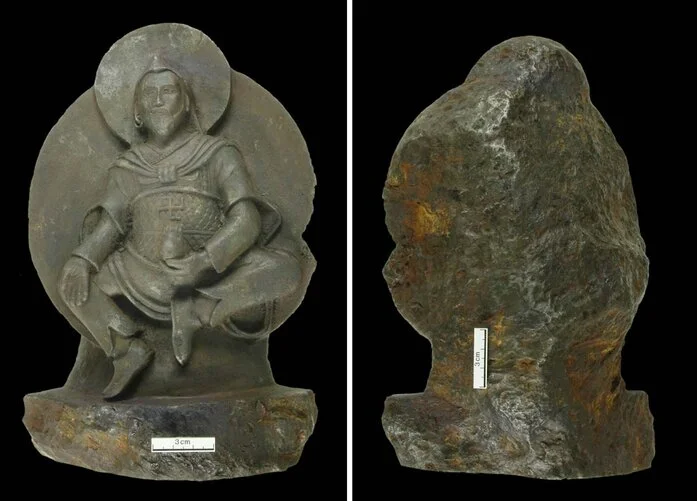
Meteorites and Planetary Science published an article on the so-called Buddha from space—An ancient object of art made of a Chinga iron meteorite fragment. The article garnered a lot of interest on the BBC, since the statue was originally found by Nazis in the 1930s, and then traced back to the Chinga meteorite, which crashed about 15,000 years ago. From the article’s abstract:
“The fall of meteorites has been interpreted as divine messages by multitudinous cultures since prehistoric times, and meteorites are still adored as heavenly bodies. Stony meteorites were used to carve birds and other works of art; jewelry and knifes were produced of meteoritic iron for instance by the Inuit society.
“But this approximately 10.6 kg Buddhist sculpture (the “iron man”) made of an iron meteorite, represents a particularity in religious art and meteorite science. The specific contents of the meteorite signify that the statue was carved from fragments of the Chinga ataxite (ungrouped iron) meteorite-strewn field discovered in 1913. The provenance of the meteorite as well as of the piece of art strongly points to the border region of eastern Siberia and Mongolia, accordingly. The sculpture possibly portrays the Buddhist god Vaiśravana and might originate in the Bon culture of the eleventh century. However, the ethnological and art historical details of the “iron man” sculpture, as well as the timing of the sculpturing, currently remain speculative.”
Read the full article here.
